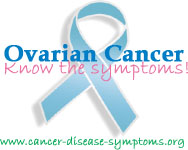The major risk factors for ovarian cancer fall into three categories: hormonal, environmental, and genetic.
On the hormonal level, the risk may be directly related to the number of ovulatory cycles in a woman's life. The postulated theory is that the uninterrupted cell division and regeneration of the ovarian epithelium-without pregnancy-induced rest periods-may invite mutation and malignancy.
Therefore, women who've had no pregnancies are at an increased risk. Infertility also may be a risk factor because childless women who've been pregnant show the same risk as women who've never been pregnant. The risk for ovarian cancer peaks in the eighth decade of life.
We know less about links between environmental factors and ovarian cancer. Industrialized countries report the highest incidence; developing countries report the lowest incidence, but we don't low why. Lifestyle factors such as diet and exercise are being studied. Cosmetic use of talc in powders used to dust the perineum, in feminine hygiene sprays, and on sanitary napkins or condoms has been identified as a risk factor.
Nothing alters the magnitude of risk for ovarian cancer more than genetics. Hereditary ovarian cancer syndromes account for 5% to 10% of ovarian cancers. In general, the closer the degree of relative and the younger the relative at diagnosis, the higher the risk.
Research is ongoing in all these areas and continues to provide us with new information.
| Older then 40 | |
| Postmenopausal | |
| White | |
| Celibate | |
| Nulliparous (having no children) | |
| Infertility problems | |
| Family history of ovarian, breast, colorectal, or endometrial cancer Inconclusive risk factors include a high fat diet, childhood diseases such as rubella and mumps, and exposure to such ovarian carcinogens as asbestos and talc. |
